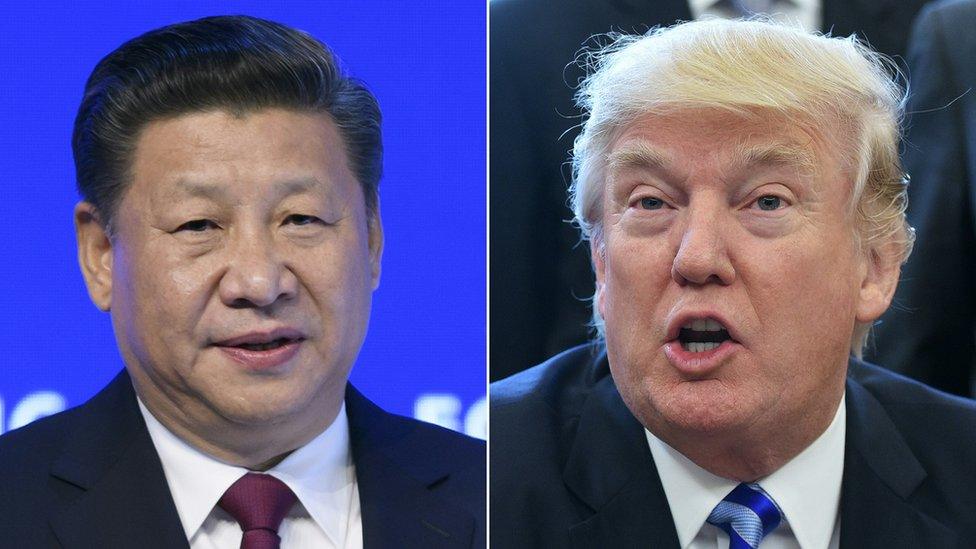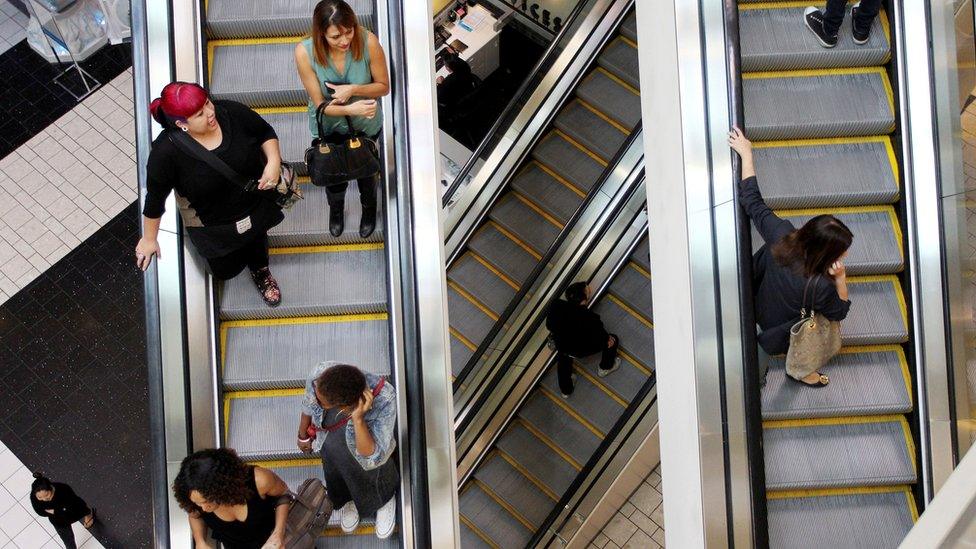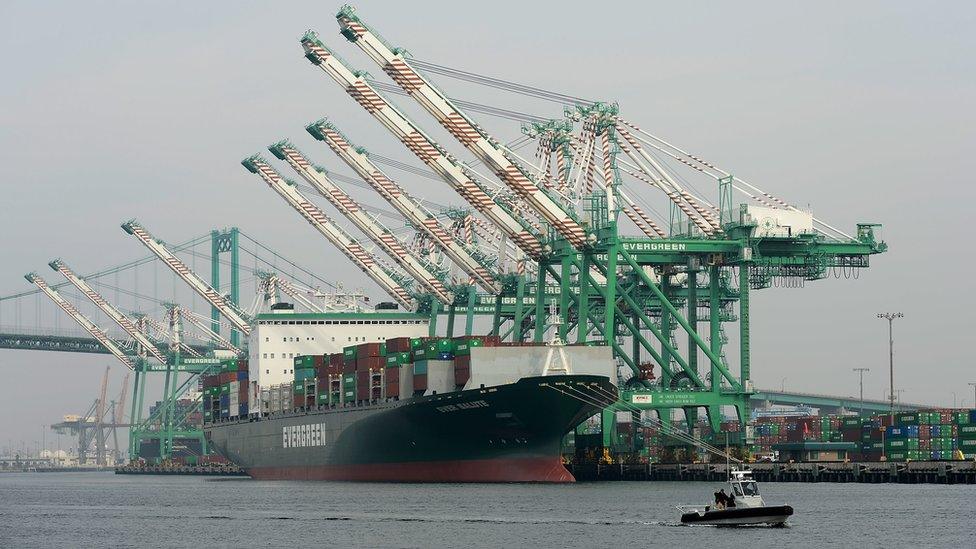Is Trump wise to take on China over trade?
- Published

Presidents Xi and Trump meet in Florida on Thursday
US President Donald Trump has said that trade negotiations with China will be "very difficult, external" when he meets President Xi Jinping in Mar-a-Lago, Florida, on Thursday.
Trade will be one of two key issues on the agenda, along with North Korea. But what's the problem - and what can Trump do about it?
Buying Chinese
The problem with the US-China trade relationship is that it is highly unequal and has been for a long time.
In 2016 alone, the US imported $480bn (£385bn) of goods and services from China - mostly consumer items like clothing, shoes, televisions, smartphones, laptops and tablets.
Those imports keep prices low for American consumers.
In return, the US sold just $170bn (£137bn) worth of exports to China - including sophisticated machinery like aircraft and agricultural products like soybeans.
It also makes money from services, like the education of an estimated 350,000 Chinese students in the US.
Overall, China is the largest source of the US trade deficit - the amount by which the value of its imports exceeds the value of its exports. In 2016 it accounted for about 60% of its overall deficit of $500bn (402bn).

Read more on this story:
The meeting takes place at Mar-a-Lago in Florida - a private members club as well as the Trump family's winter getaway

The loss of American jobs
President Trump is unhappy with this state of affairs, tweeting in January: "China has been taking out massive amounts of money & wealth from the US in totally one-sided trade, external."
He sees a link with the loss of manufacturing jobs - and he has a point, because a large trade deficit generally goes hand-in-hand with a smaller manufacturing sector.
This is a problem, because for people without college degrees these jobs tend to be well-paying ones.

US shoppers have enjoyed years of cheap imports
During his campaign, Mr Trump spoke often of wanting to bring manufacturing jobs back to the US and, in the first presidential debate, said: "They're using our country as a piggy bank to rebuild China., external"
After China joined the World Trade Organization in 2001 there was a surge of Chinese imports into the US, something economists called the "China shock".
Between 2000 and 2007, US manufacturing jobs fell sharply, from 16.9 million to 13.6 million. The 2008 financial crisis pushed the number lower, to 11.2 million, although the number has since been fairly stable.
Workers making clothing and electronic goods were among the worst affected.
It is difficult to settle upon an exact figure, but some economists think that 40% of these job losses can be linked to Chinese imports.
However, the influx of cheap goods also created non-manufacturing jobs in the US, because consumers had more money to spend on other things.
That boosted healthcare, entertainment, travel, and leisure. So, think of the trade deficit destroying some jobs and creating others.

Open the gates
So, what can President Trump do about the trade deficit?
Candidate Trump threatened harsh protectionist measures, such as a 45% tariff on Chinese imports, but history shows that protectionism does not reduce trade deficits.
He also threatened to name China a "currency manipulator" and at one point during his campaign went so far as to accuse it of "raping" the US with its trade policy.
For years China intervened to keep its exchange rate low, which kept the price of its goods down and helped increase the US deficit. But more recently its central bank has kept the currency high - making its exports more expensive - and it is in the US's interest to encourage more of this.

The US has long been spending more on goods from other countries than it sells
The most promising route for President Trump is to negotiate better access to Chinese consumers.
China has many restrictions on imports, for example a 25% tariff on cars. And while the US sells a lot of agricultural products to China, notably soy beans, key markets like beef and pork are highly restricted.
Probably most important for the US is that modern service sectors like finance, social media, telecommunications, health care and transportation are largely closed to imports and foreign investment.
So far there has been little progress, but opening China's markets would offer more choice to its own consumers and would help maintain a stable relationship with the US.
China's economy depends on keeping the trade flowing with its biggest customer.

Low expectations
Will there be a trade war?
Probably not, because protectionist measures would hurt the US economy and the Chinese are counting on it to be impractical.
The Chinese Communist Party has an important congress at the end of the year and it will be difficult for Xi to do anything bold before then.
Even afterwards, China is likely to move very gradually on market opening.
Trump was smart to set low expectations for the summit.
David Dollar, external is a senior fellow in the John L Thornton China Center at the Brookings Institution, external, a public policy organisation based in Washington DC.
Twitter: @davidrdollar, external and @BrookingsInst, external


- Published5 April 2017